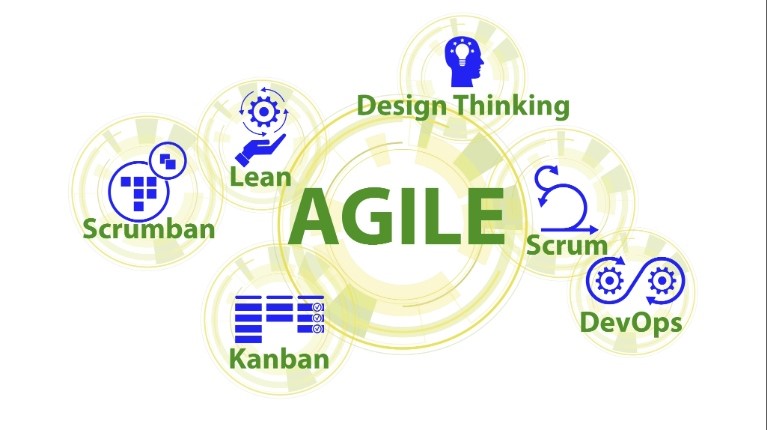What Is An Agile Environment?

Enterprises face the same challenge: how to stay competitive in a world that changes faster than traditional project methods allow. Static plans and rigid structures often lead to delays, missed opportunities, and solutions that no longer fit the moment.
Organizations are beginning to adopt an Agile environment. It is a cultural shift that transforms collaboration, encourages experimentation, and allows businesses to respond to change with confidence.
In an Agile environment, teams replace rigid processes with iterative progress, customer engagement, and constant improvement. They move away from long, linear project cycles and instead work in shorter, manageable sprints that produce usable results. When paired with Agile environment software, this approach gives enterprises the structure and intelligence they need.
The Agile Environment Explained
An Agile environment creates a foundation built on flexibility and collaboration. Instead of forcing projects into strict, inflexible plans, teams adjust their goals as new information becomes available.
Agile management provides the framework to guide this adaptability, keeping work aligned with strategy while giving teams the autonomy to act on immediate needs.
The principles at the heart of agility remain simple yet powerful. People and interactions matter more than tools. Working solutions carry greater weight than endless documentation. Customer collaboration outweighs contract details. And responding to change takes precedence over following a static plan.
These values shape the way teams interact, how leaders guide execution, and how enterprises deliver results that remain relevant in real-world conditions.
Agile environment software reinforces these principles by integrating people and data within a unified ecosystem. It creates visibility into progress, allows for real-time feedback, and directly links business objectives to execution. In this setting, adaptability becomes natural and innovation becomes repeatable.
Characteristics that Define the Agile Environment
Agile environments share traits that distinguish them from traditional project structures. Flexibility allows teams to pivot quickly when project requirements or market conditions evolve. Collaboration keeps communication constant and decision-making distributed across teams. Work progresses in iterations, which means value is delivered continuously instead of at the end of a long cycle.
Regular reviews allow leaders and stakeholders to adjust priorities and identify risks before they escalate. This constant input strengthens trust and reduces waste. Agile management frameworks reinforce these practices with structure, making sure that every iteration builds on the last.
Clients can also contribute throughout the process, shaping the direction of work and validating results as they emerge. That focus on value delivery keeps projects aligned with actual needs rather than assumptions. Agile environment software supports these practices by providing transparency. It also creates communication channels that connect stakeholders across distributed teams.
Agile Management and Modern Software
Agile management enables enterprises to link strategy to execution in ways that create clarity across large, complex organizations. Leaders gain visibility into the progress of multiple initiatives, enabling them to prioritize resources effectively. On the other hand, teams can see how their work connects to the enterprise vision.
Enterprise Agile planning tools expand this capability by making alignment visible at scale. Leaders can tie long-term strategy directly to the tasks carried out by delivery teams. When unexpected shifts occur, leaders can adjust course with precision rather than disrupting the entire system.
At the team level, Agile project management solutions support sprint planning, backlog refinement, and iterative delivery. They simplify communication across teams and highlight dependencies that could slow down execution. With this infrastructure in place, enterprises create an environment where adaptability and coordination reinforce each other.
Building a Culture that Sustains Agility
Tools and frameworks create structure, but culture determines success. An Agile environment thrives only when organizations embrace collaboration, empowerment, and a willingness to adapt to change. Leaders encourage transparency by sharing information openly and welcoming new ideas. Teams can feel trusted to make decisions and contribute to strategy.
Continuous improvement defines the pace of an Agile culture. Retrospectives and reviews are not treated as routine tasks but as opportunities for teams to learn, refine, and grow. This mindset turns experimentation into a habit, making change less disruptive. Over time, the culture becomes a self-sustaining system that adapts naturally without losing productivity.
Creating the Next Generation of Agile Environments
At Radus Software LLC, we built Metronome to help enterprises bring agility and intelligence together. Enterprises need a platform that scales across the cloud and integrates with existing systems. Metronome delivers AI-powered collaboration, robust scalability, and security frameworks that support AWS, Azure, and GovCloud environments.
With our enterprise Agile planning tools and Agile project management solutions, we help organizations create environments where adaptability fuels growth. Request a demo today to create an Agile environment that complements the way your enterprise operates.



